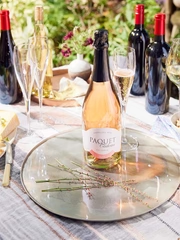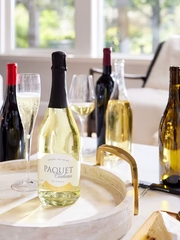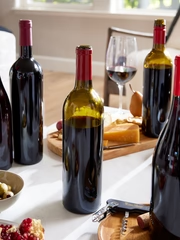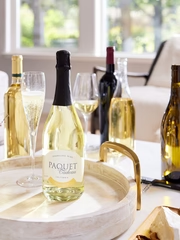 Famed wine journalists and critics Robert Lawrence Balzer, Robert Finigan and Robert M. Parker Jr. have helped consumers make decisions by developing standard evaluation criteria. This helped make wine more accessible to the average person, helping it become more mainstream. Robert M. Parker Jr. is now the leading U.S. wine critic, developing wine ratings on a 100-point scale in his newsletter The Wine Advocate. He is widely considered the most recognized and influential wine critic in the world today. Therefore, if he turns around and says 2012 is the worst vintage he tasted, nobody will buy it, but if he says it’s the best, everybody will.
With their magazines, restaurants or wine competitions, these institutions have tremendously helped the popularity of wine consumption in the U.S. WineShop At Home has taken the idea of reviewing wine a step beyond this point.
Our wines are tasted directly in people’s homes. If you want to be a judge, then by the power vested in me, I declare you: “Grand Master Taster by the Order of WineShop At Home.” Everyone can be a judge and feel comfortable with the wines they like. I want everyone who tastes our wines to feel empowered to use their own abilities to express themselves when they talk about our wine. However, I am often asked if our wines are rated by critics, or if we have point values available.
Famed wine journalists and critics Robert Lawrence Balzer, Robert Finigan and Robert M. Parker Jr. have helped consumers make decisions by developing standard evaluation criteria. This helped make wine more accessible to the average person, helping it become more mainstream. Robert M. Parker Jr. is now the leading U.S. wine critic, developing wine ratings on a 100-point scale in his newsletter The Wine Advocate. He is widely considered the most recognized and influential wine critic in the world today. Therefore, if he turns around and says 2012 is the worst vintage he tasted, nobody will buy it, but if he says it’s the best, everybody will.
With their magazines, restaurants or wine competitions, these institutions have tremendously helped the popularity of wine consumption in the U.S. WineShop At Home has taken the idea of reviewing wine a step beyond this point.
Our wines are tasted directly in people’s homes. If you want to be a judge, then by the power vested in me, I declare you: “Grand Master Taster by the Order of WineShop At Home.” Everyone can be a judge and feel comfortable with the wines they like. I want everyone who tastes our wines to feel empowered to use their own abilities to express themselves when they talk about our wine. However, I am often asked if our wines are rated by critics, or if we have point values available.
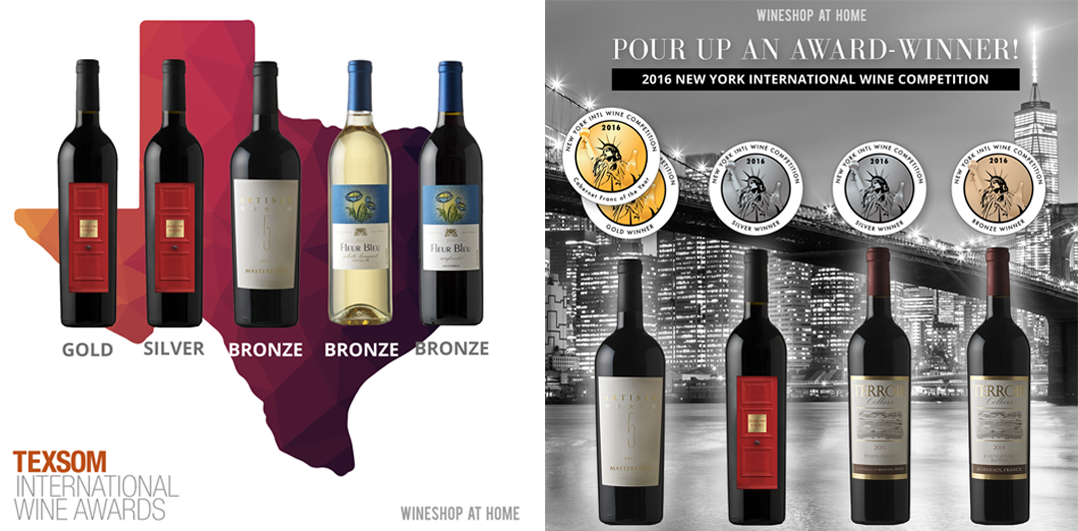 This past year, our Artisan 5 2013 Masterpiece took home a Gold Medal and the Cabernet Franc of the Year Award at the New York International Wine Competition. Another Cabernet Franc from Alexander Valley in the same category received a Bronze Medal. This wine was also tasted by Robert M. Parker Jr. and received 92 points. It is conceivable that our Masterpiece wine could have easily fetched up to 95 points or above if had been reviewed by his publication. At the 2016 TEXSOM International Wine Awards, wines that were awarded a Gold Medal were within the 90 to 94-point range. Our Harlow Court Private Reserve won a Gold Medal at this competition. Therefore, it is safe to say that the Harlow Court Private Reserve could also be in the range of 90 to 94-points.
Our challenges are unique but our opportunities are also unique. Indeed, we do not offer our wines in the traditional retail environment. Our wines are not found at your local Kroeger, Nob Hills, Safeway, Walmart or any restaurants for that matter. Previously in my career, I worked for wineries that live and die by scores and ratings. Ratings offer their only chance to gain shelf space or to be included on the coveted wine lists of famed restaurants from Houston to Chicago and Miami to Des Moines.
So be a renegade, a romantic, an individualist, an original or a collector if you want; be whatever you want to be. Our tasting environment is friendly, convivial and open. You can say a lot about our wines or say just a few words if you choose.
Nobody is judging!
This past year, our Artisan 5 2013 Masterpiece took home a Gold Medal and the Cabernet Franc of the Year Award at the New York International Wine Competition. Another Cabernet Franc from Alexander Valley in the same category received a Bronze Medal. This wine was also tasted by Robert M. Parker Jr. and received 92 points. It is conceivable that our Masterpiece wine could have easily fetched up to 95 points or above if had been reviewed by his publication. At the 2016 TEXSOM International Wine Awards, wines that were awarded a Gold Medal were within the 90 to 94-point range. Our Harlow Court Private Reserve won a Gold Medal at this competition. Therefore, it is safe to say that the Harlow Court Private Reserve could also be in the range of 90 to 94-points.
Our challenges are unique but our opportunities are also unique. Indeed, we do not offer our wines in the traditional retail environment. Our wines are not found at your local Kroeger, Nob Hills, Safeway, Walmart or any restaurants for that matter. Previously in my career, I worked for wineries that live and die by scores and ratings. Ratings offer their only chance to gain shelf space or to be included on the coveted wine lists of famed restaurants from Houston to Chicago and Miami to Des Moines.
So be a renegade, a romantic, an individualist, an original or a collector if you want; be whatever you want to be. Our tasting environment is friendly, convivial and open. You can say a lot about our wines or say just a few words if you choose.
Nobody is judging!


